|
Having figured out how the Mystery Sun works, along with lots of other questions on the DQB these last few weeks, students worked on answering other questions they had posted that we didn't quite figure out. We called this our "Research Day," and students could direct their own research!
Coming together on the rug, we summarized what we've figured out the last five weeks or so. 1. We see the Sun during the day because we're on the part of the Earth that faces the Sun. There are lots of other stars behind the Sun, but they're light years away, so we don't see them. We might occasionally see the moon if it's in the "right spot" in its orbit of the Earth during our daytime. 2. We see other stars at night because the part of the Earth we're on no longer faces the Sun, and we can now see the other stars that are farther away. The stars we see change as the Earth orbits the Sun. In fact, we can predict what we see each year, because constellations reappear as we re-enter the same part of orbit each year. These stars appear so small compared to the Sun because they're really far away. 3. The moon appears sometimes during the night because it's lit up by the Sun and in our nighttime sky. What we see of the moon changes not because its size changes, but how much of it is illuminated by the Sun does. This left us thinking...how does the Mystery Sun happen then? Using the globe and our inflatable Sun, we tried to figure out how the Earth must be positioned and where it must be in its orbit of the Sun to ONLY get sunlight (and therefore never experience nighttime). We set up some physical models that looked like this: And researching a scientific model of the Earth's position during the peak of summer landed us in the Arctic Circle (or the North Pole)! It is here, at the tip of the Earth, that receives only daylight during the Summer Solstice!
Using the online simulator really helped us see what is going on at nighttime at different times of the year. We're certain that we see other stars besides the sun at night, and now we're really certain that we see specific groups of stars at the same times of the year.
Students got to work researching the constellations we see on a yearly basis, and discovered that some of the stars that make up these constellations are actually MUCH bigger than our Sun. This got them thinking about scale (yet again), and they figured out that some of these stars have to be REALLY far, like LOTS and LOTS of light years away. With a little research, we realized the model we set up below wasn't the best (not all these stars are equidistant from the Sun), and that these stars that appear tiny in our constellations can be much bigger!
So now that we've figured out how we see the moon, we want to figure out more about the stars we see at night. This is helping us possibly with understanding why we don't see them in our Mystery Sun phenomenon.
We are turning to an online simulator to help us model what we think is happening. Since the Earth orbits the Sun, we think it might be helpful to see how this may play a role in seeing only the Sun at a certain location. We agreed that our Mystery Sun phenomenon never had night appear, and unlike here in Chicago, the moon didn't appear in either the day or the night. We figured our next steps should be figuring out about the moon, and how that could possibly help us explain what was going on (or not going on) with the Mystery Sun. Here is our initial thinking about how we see the moon during both the day and the night (since we have experienced seeing the moon during both these timeframes...even just the other morning at pick-up time from the playground)! From our initial models, we thought it was important we establish some rules on how the moon orbits the Earth, and also keep in mind what we know about the size of the moon as it compares to the Earth and the Sun, too. Since the last picture above didn't make sense to us (that night time on Earth meant we didn't experience seeing a moon--which we DO)... We should really be thinking about size/scale YET AGAIN! Looking at a size comparison, here is what the size differential really is between the Earth, moon and Sun. This shows us that light can reach the moon when it's on the opposite side of the Earth in its orbit.We agreed again, that despite differences in our models, that turning to a 3D experience might help us! Using ourselves as the Earth, the SMARTBoard as the sun, and a ping-pong ball (half painted black) as the moon, we could figure out why we see the moon both during the day and the night. It really helped us see how we could see the moon at different times of both night and day. We developed a consensus model as a class, and used an online simulator to solidify our thinking about patterns with the moon, Earth, and Sun. Here are some individual representations, along with our consensus model. We've answered a bunch of questions on our DQB from this study about the moon, but we're still not super sure of the Mystery Sun yet. We do see from the simulator that night time doesn't show us what we experience, which is seeing other stars besides the Sun. Does seeing other stars at night help us better understand what is going on with the Mystery Sun not seeing other stars at night? Here's hoping!
All this made us think back to our mystery sun video from the anchoring lesson. And we agreed that we had figured out that the reason why we see the sun in the video is because it's the closest star to the Earth.
What we still don't know is why this particular location doesn't experience night (and we know what causes night), and just this past week, a group a students recognized the moon in the sky during morning pick-up. We also looked at the video again and noticed we never seen the moon during that video. This got us thinking about answering all our questions about the moon that we asked on our DQB, which included: 1. Why do we see the moon at night? 2. W hy do we see the moon during the day? 3. What makes the moon appear to change? Our next focus will be on the moon, since we've got reason to believe that if we figure stuff out about the Earth and the Moon here in Chicago, we can hopefully explain some stuff about the lack of the moon at wherever this location is in the video! So we all agree that other stars are farther away than the Sun, and as a result, they appear smaller. The models students developed are pretty interesting, and we'll be talking about how these models may not take into consideration the Earth's orbit around the Sun. Because of this, it'll be necessary to come back to the physical model (maybe in a different way) since it seems that if the Earth were to orbit the Sun (which we know it does), then based on these models the following two things would happen:
1. The Earth would collide with some of these stars in its orbit around the Sun. 2. We'd see some of these stars at a different point in the Earth's orbit, and we never see more than one star during the daytime, even if one is smaller. We also decided that our models showed a lot of qualitative data to support the Sun's proximity as compared to size, but we also agreed that quantitative data really helps us figure something out, as numbers don't lie. We pulled out some plates to represent stars, and are measuring the distance of the star's diameters as from the Earth's perspective. We're also measuring their distance from Earth, too, and will build a mathematical model to represent this phenomenon.
So after establishing consensus on why we experience daytime and nighttime, we agreed that we should go back to the DQB to see related questions. There was a question that stood out for us, and that was:
Why don't we see other stars besides the sun in the daytime? We developed some initial models and agreed that we didn't really know.
So we turned to developing a physical model to helping us better understand this phenomenon, using our Chromebooks' cameras to capture first-hand evidence of what this would look like from the Earth's perspective.
Each group was required to take as many pictures as they could with their physical models to explain why we don't see stars in the daytime. They uploaded those pictures into a shared Google Slides presentation, and explained what was going on in each picture. Some groups even took videos! Check out their work (each group's presentation is linked in the Google Drawing below).
A snippet of the students' slides presentations (in case you didn't have time to look through all of them!)
And after evaluating everyone's physical models and evidence, we sat as a class to make a similarities/differences chart to see how our models compared regarding the phenomenon. What a great way to figure this all out 5th grade!
We agreed to figure out about sunrise and sunset first, as this would help explain lots of our questions (or so we hoped!). Here are some of the initial models we developed: We recognized many similarities in our models trying to explain sunrise and sunset, and that they included both the Sun and the Earth present. Most models included some ideas of movement, but we didn't really agree on the movements. We also didn't agree on sizes--some models showed the Earth bigger than the Sun, and vice versa, while some even showed them being the same size. We also had differences in how we showed the light, and we didn't know if the moon had something to do with all this. We DID agree though, that a 3D representation of this phenomenon might help us. So we set up shop with some flashlights and Earths. And here's what this looked like: Students even wanted to take pictures from their own view... We will finalize our ideas tomorrow as we establish consensus. Hopefully we can see what other questions we can answer!
|
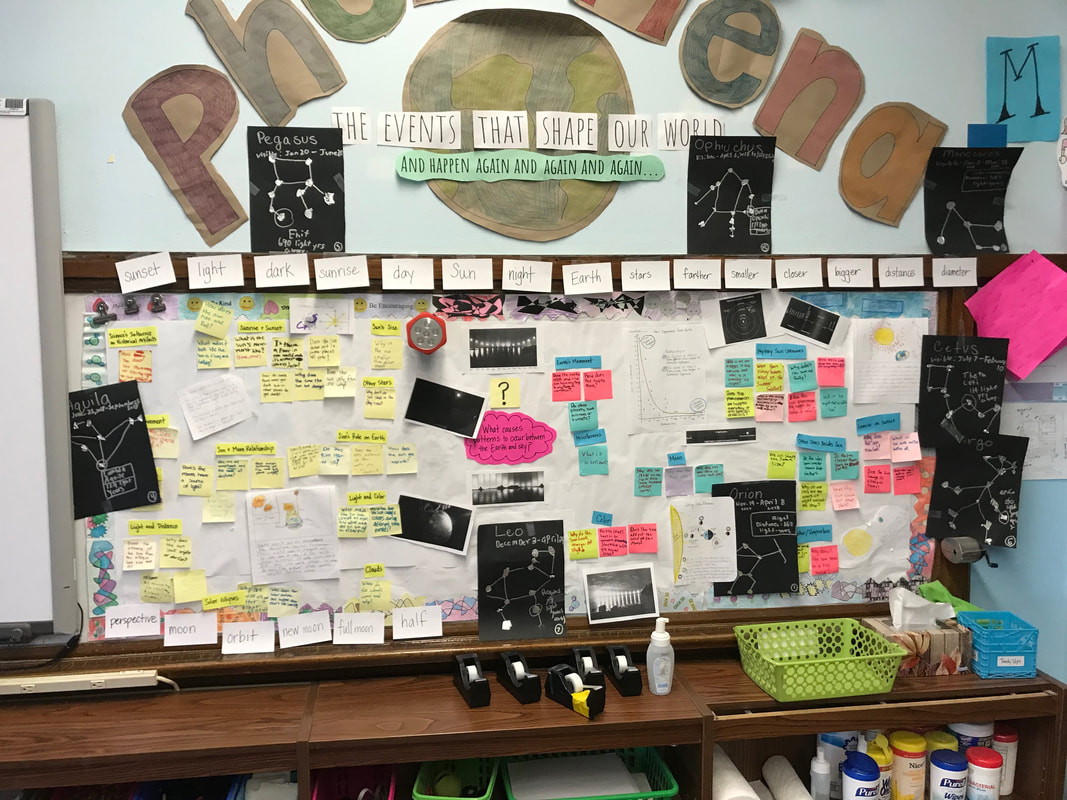
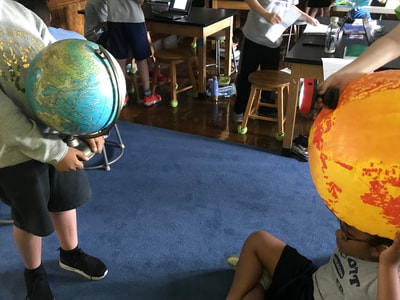
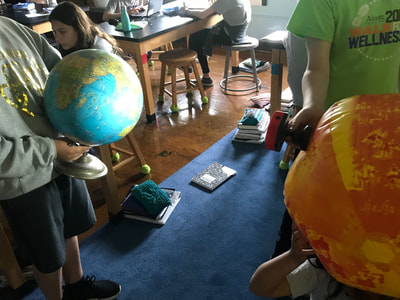
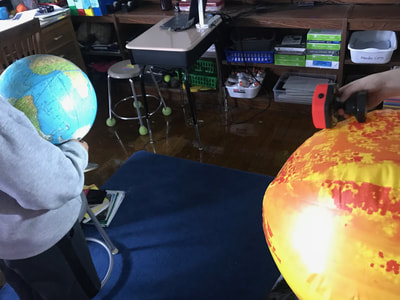
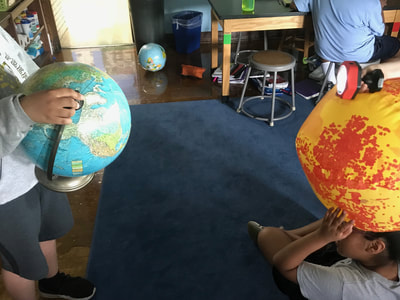
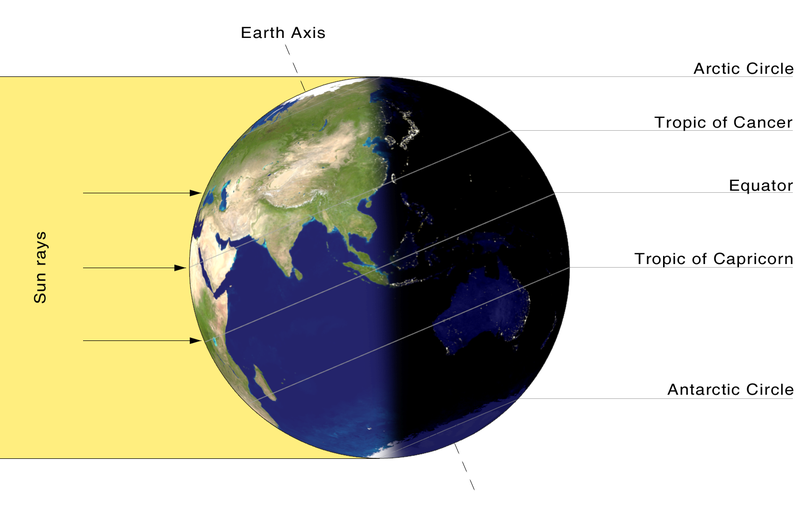
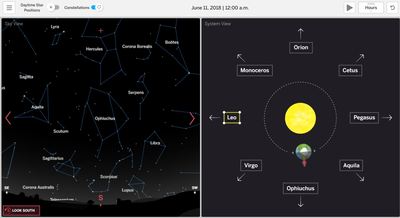
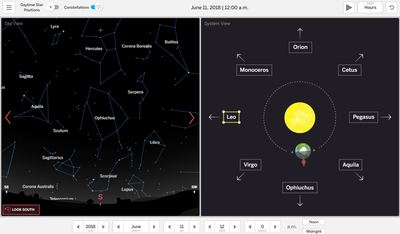
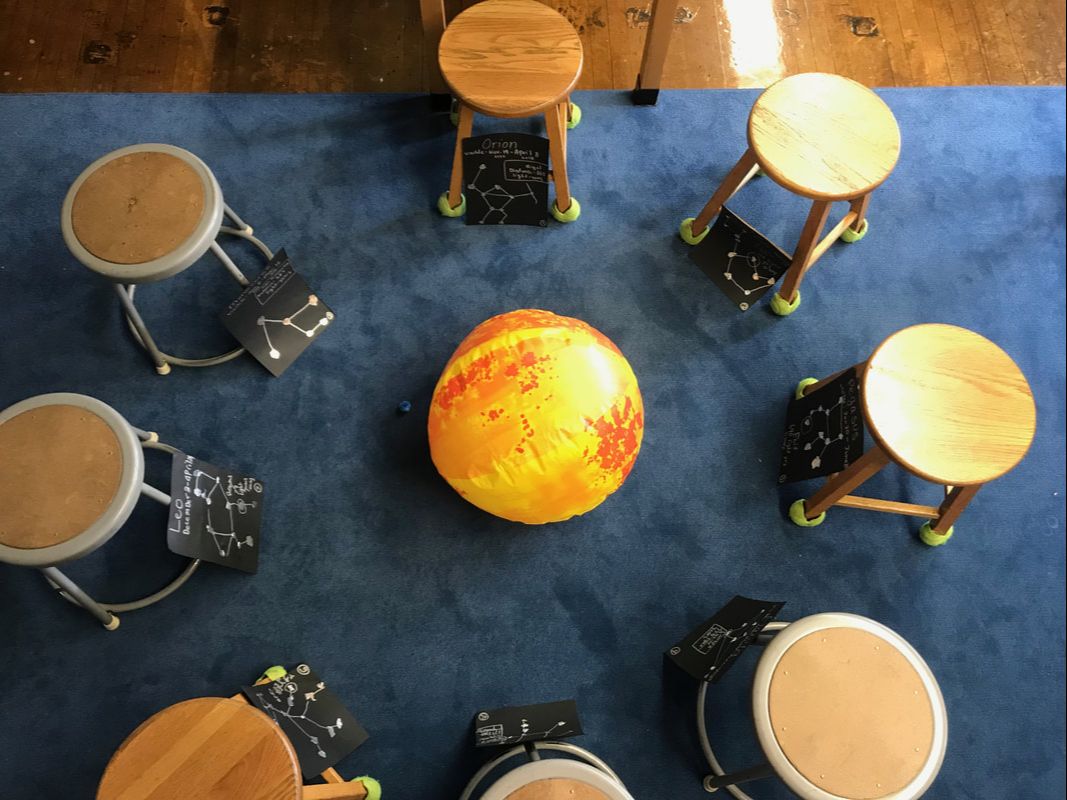
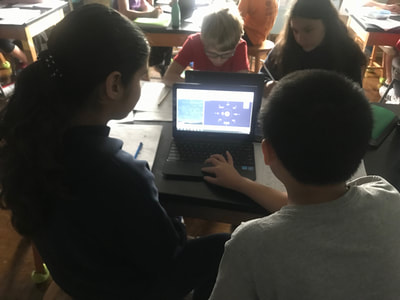
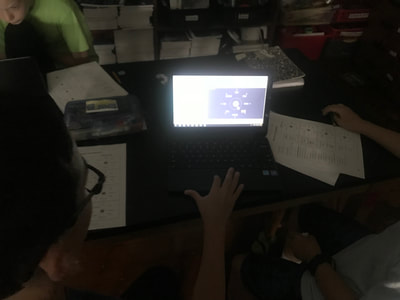
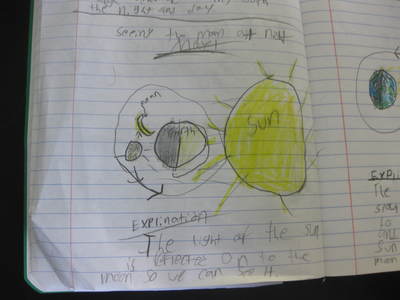
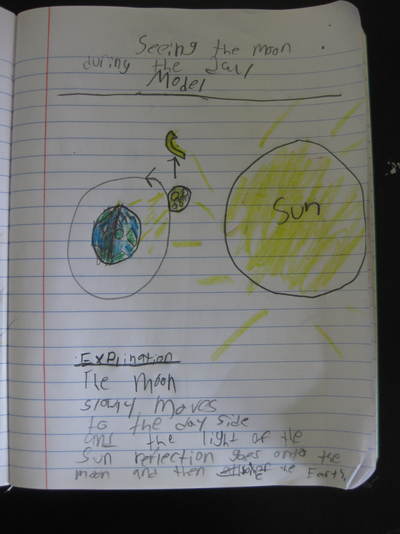
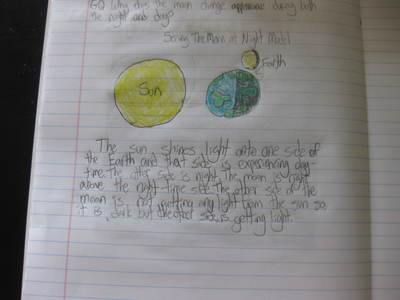
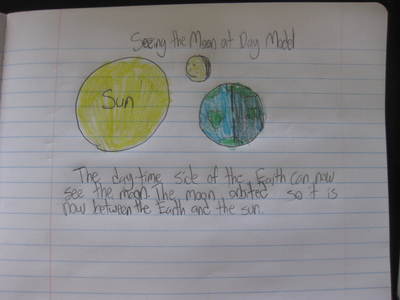
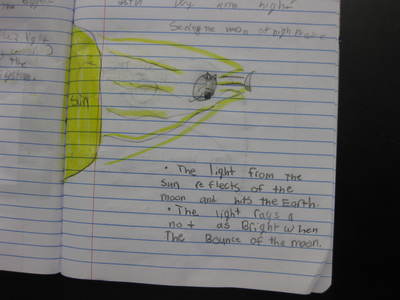
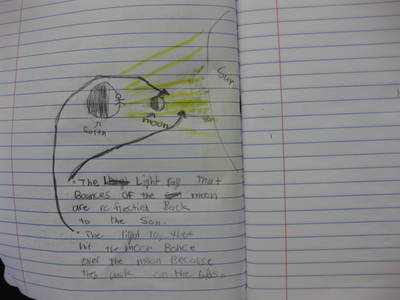
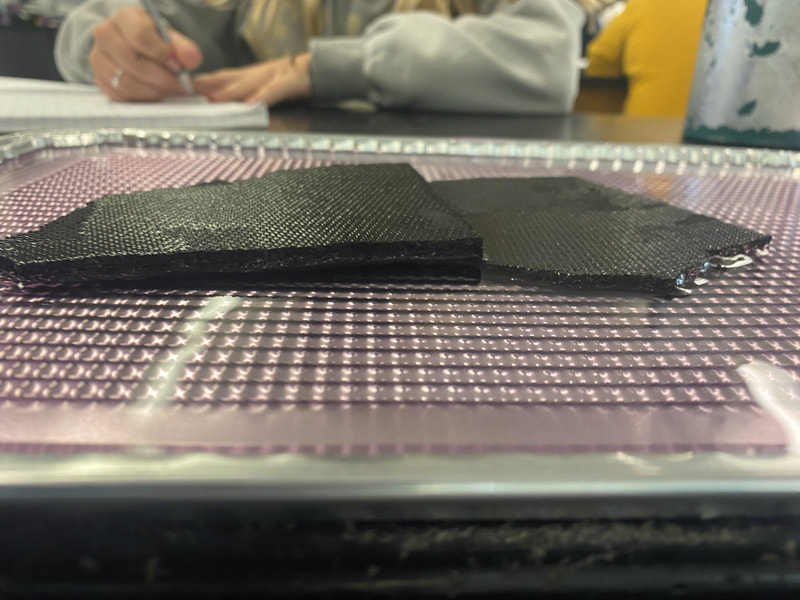
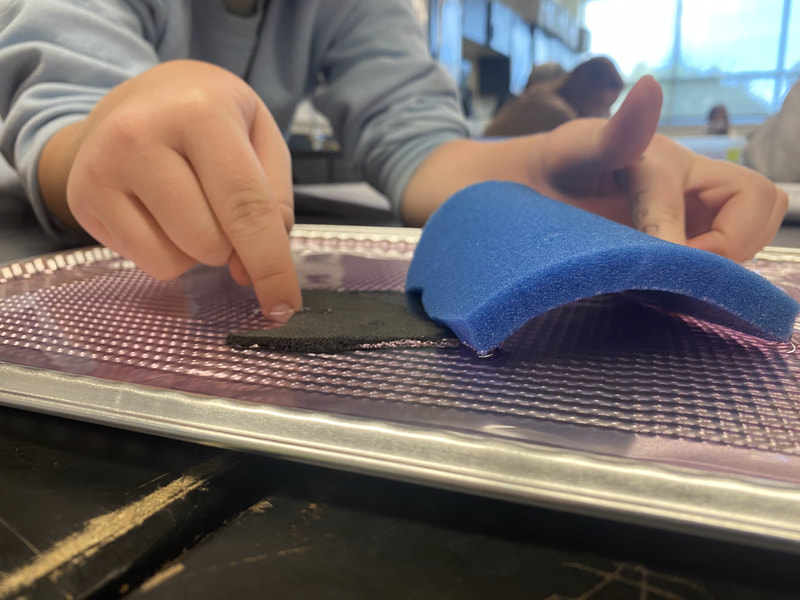
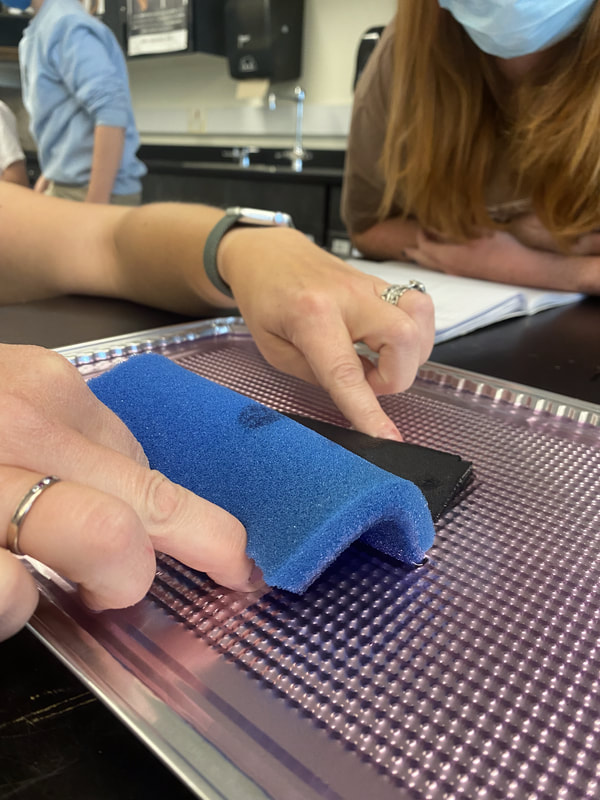
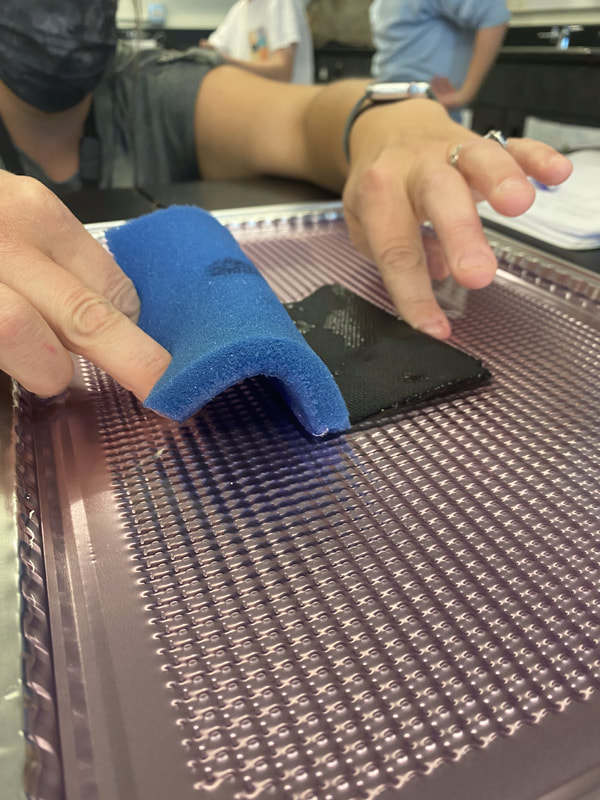
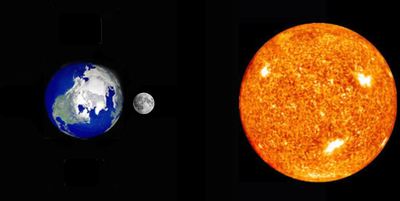
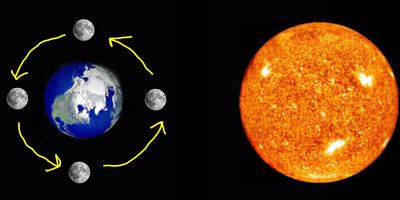
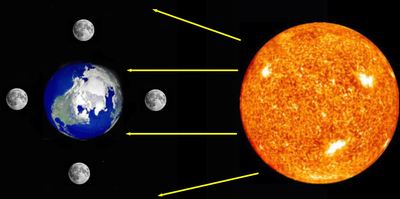
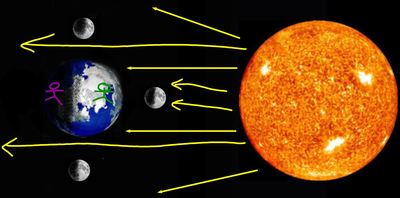
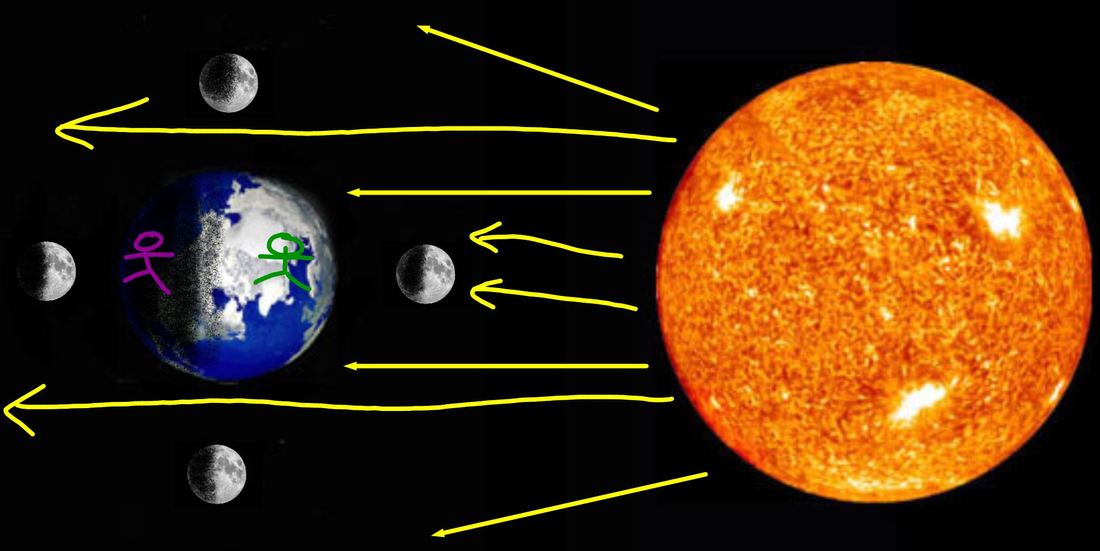
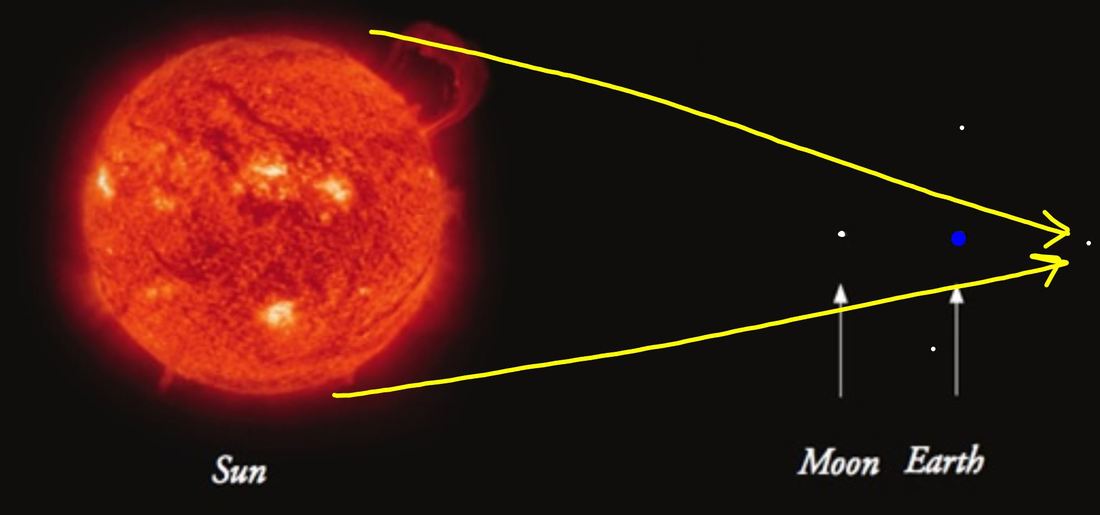
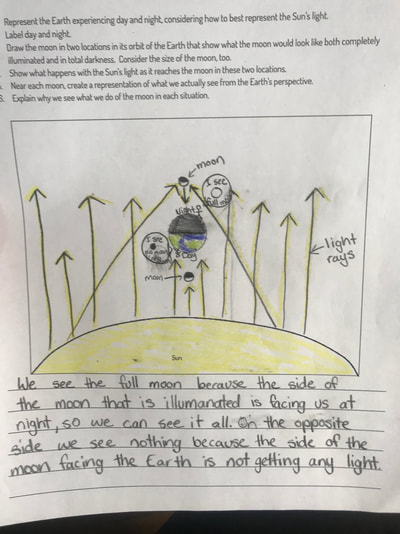
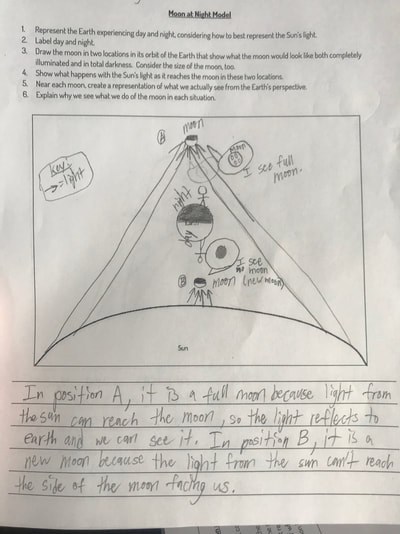
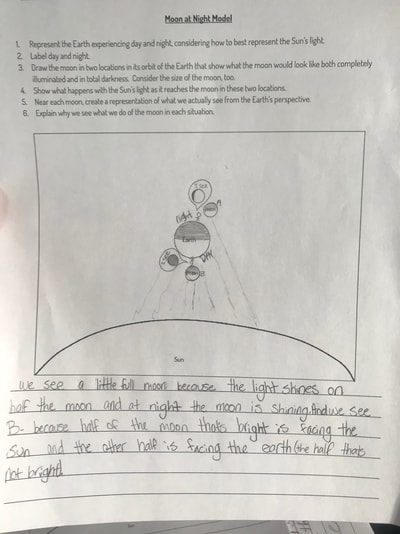
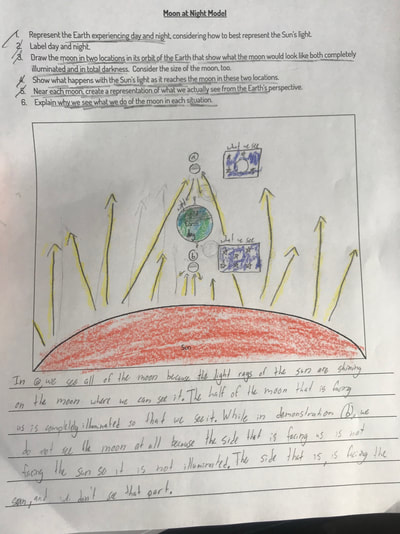
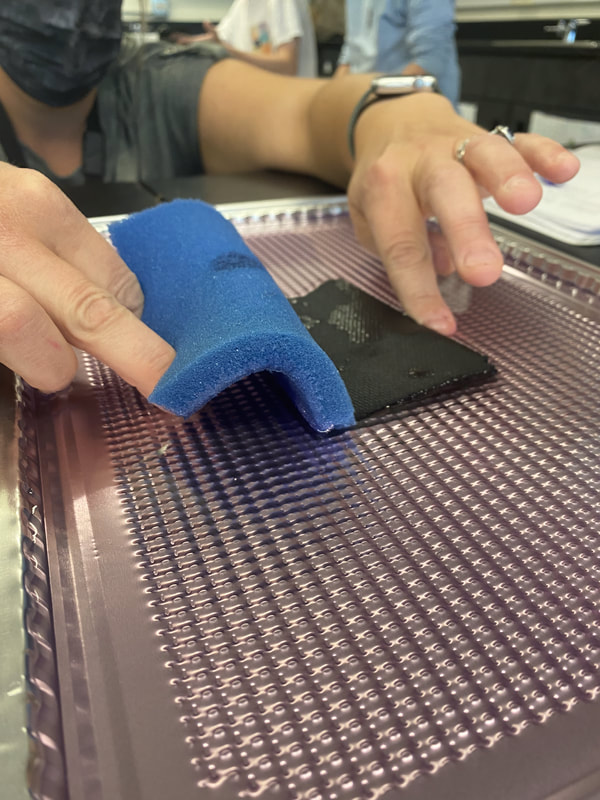
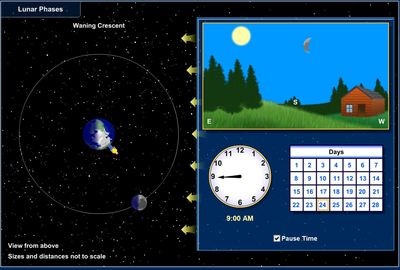
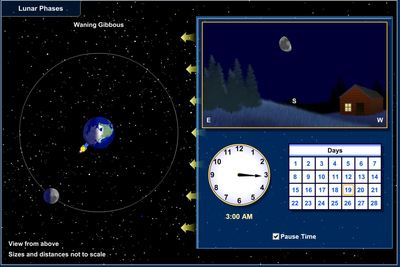
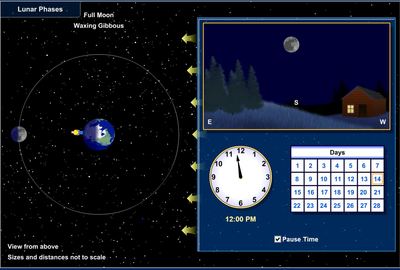
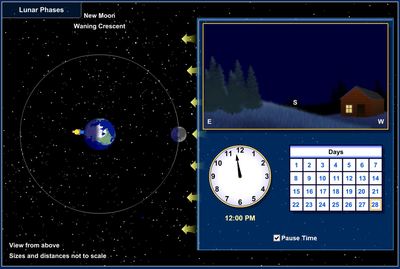
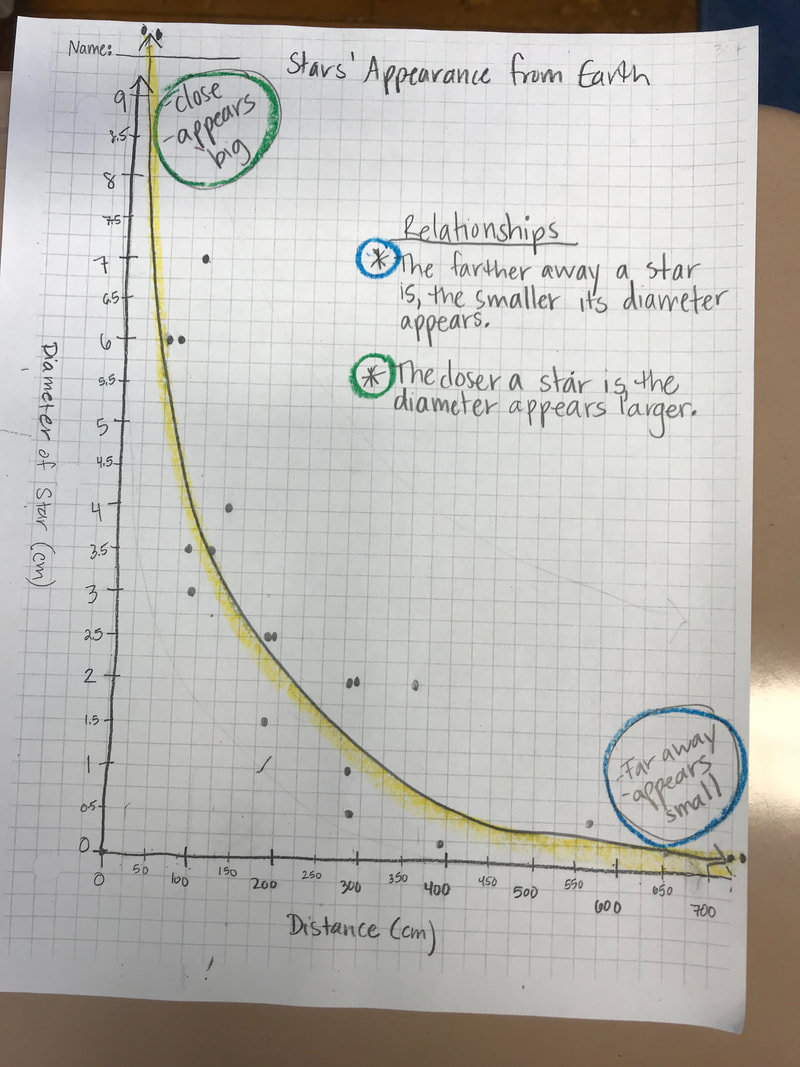
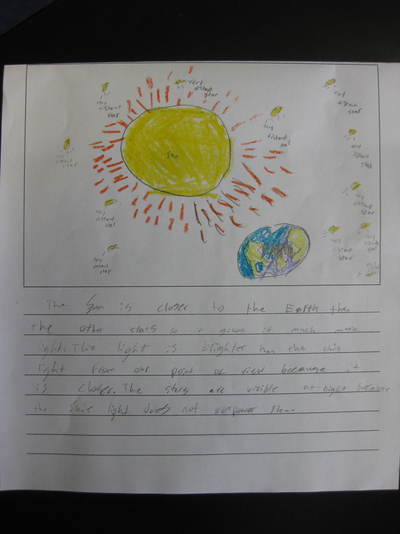
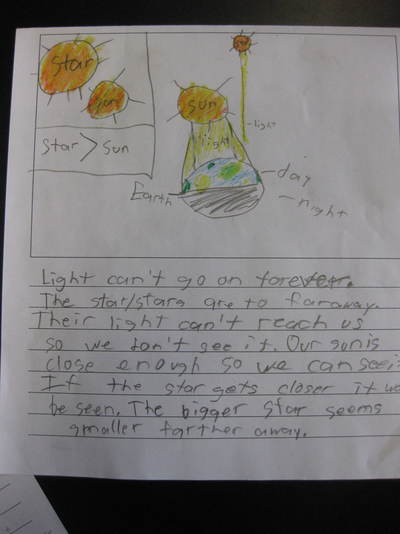
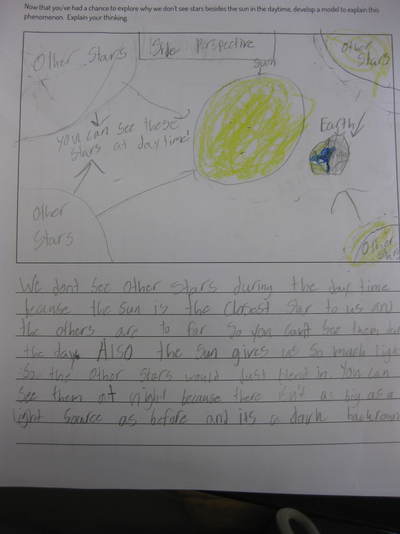
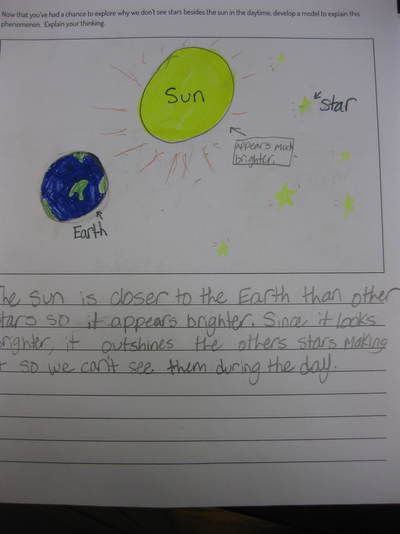
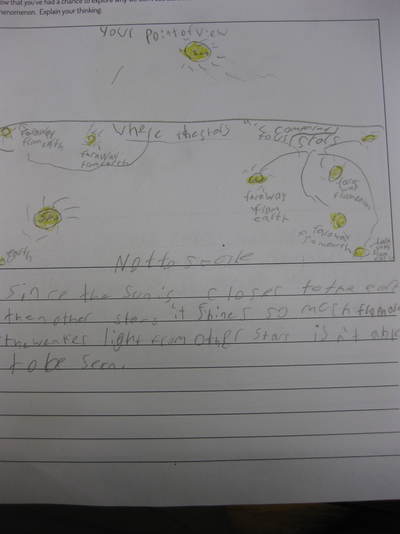
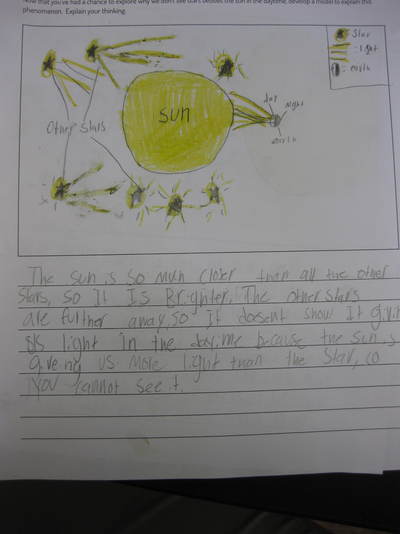
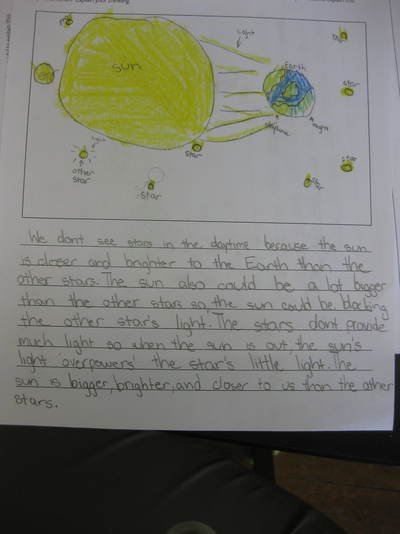
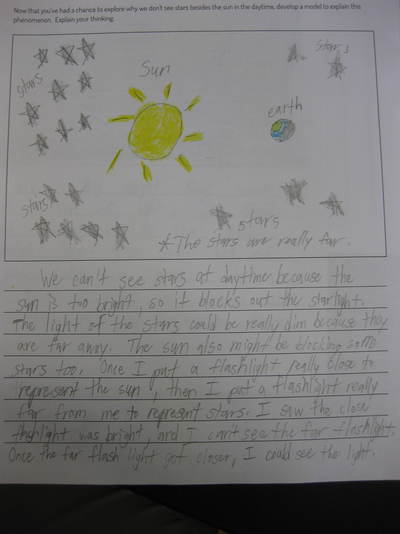
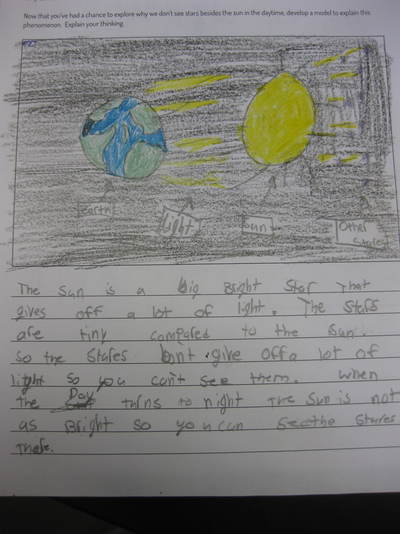
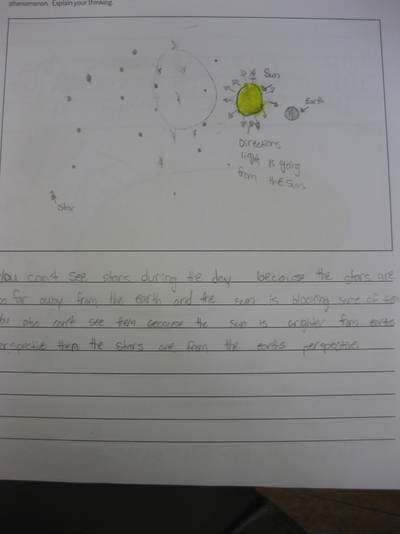
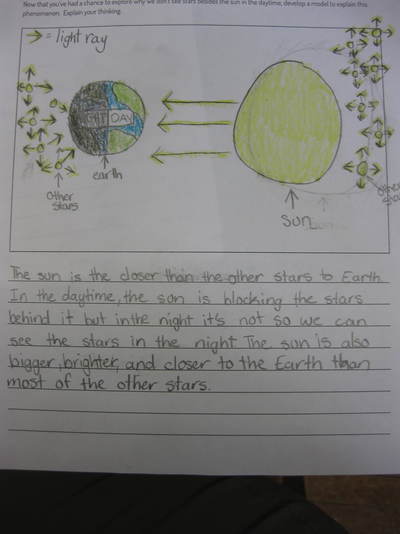
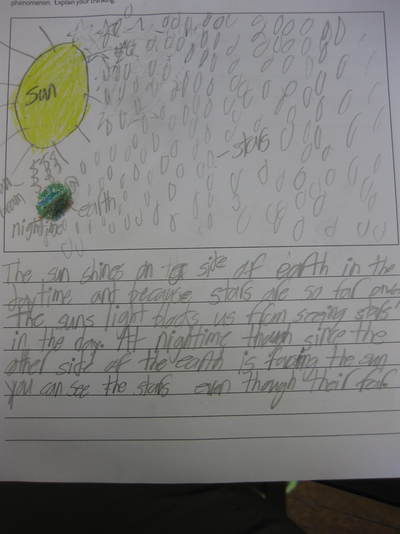
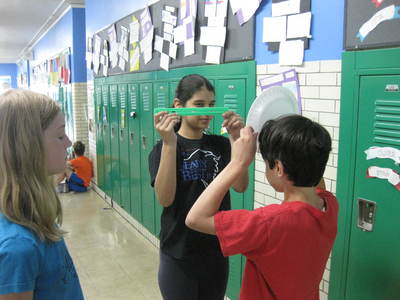
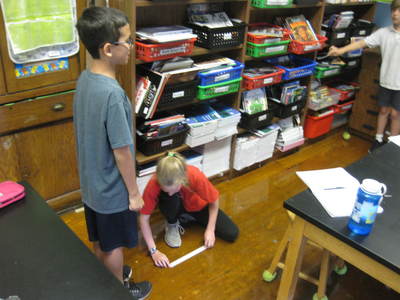
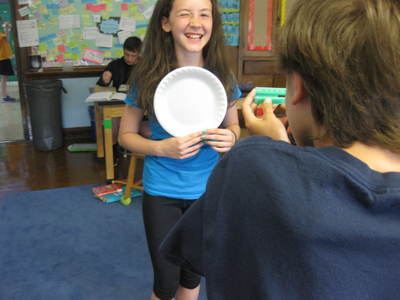
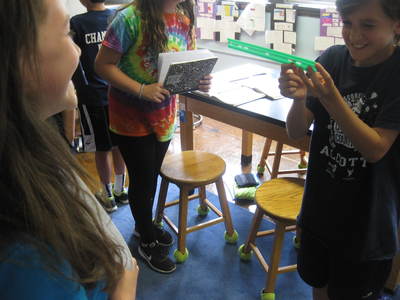
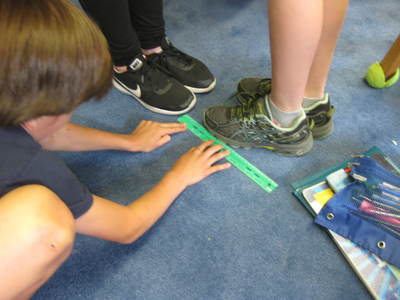
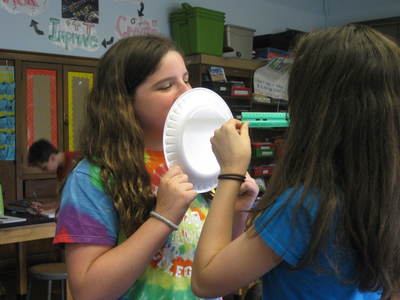
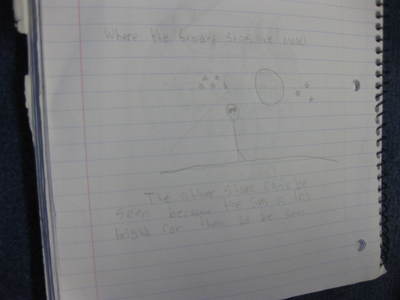
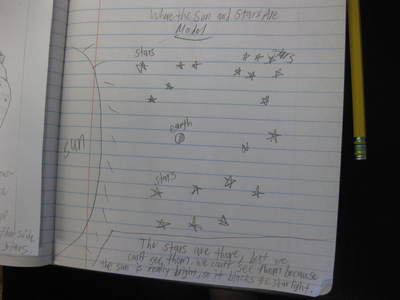
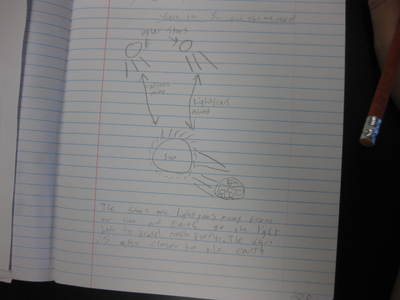
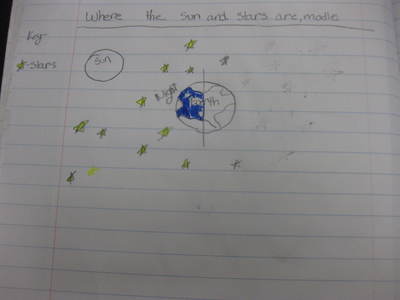
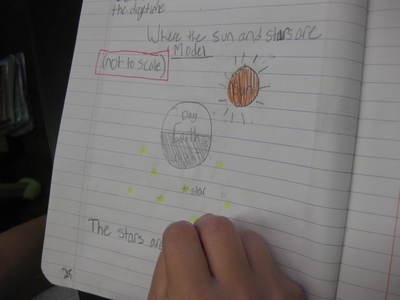
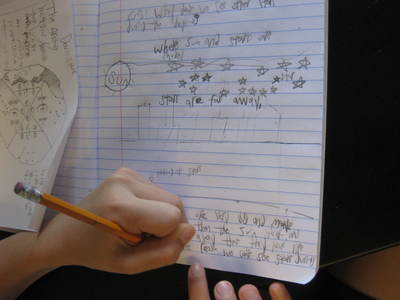
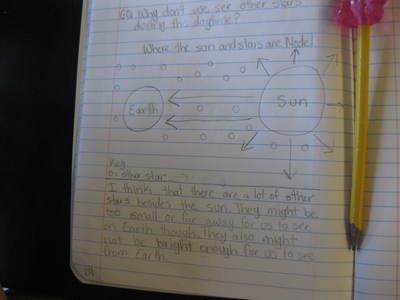
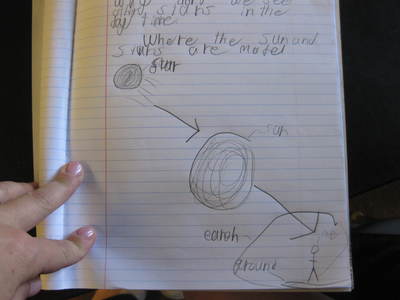
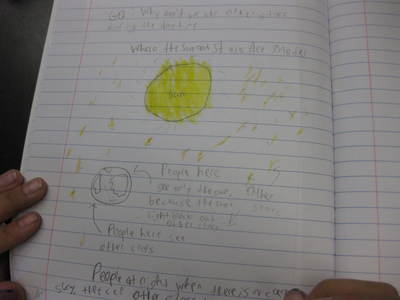
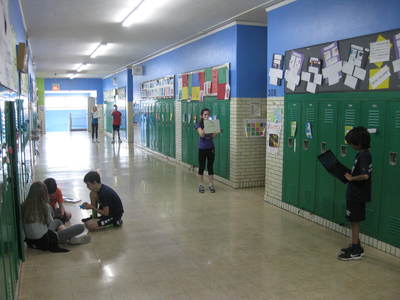
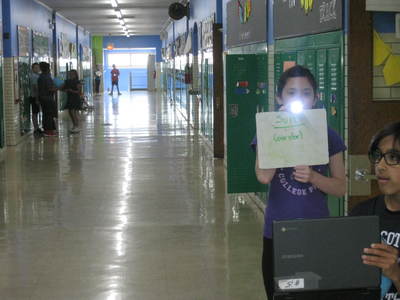
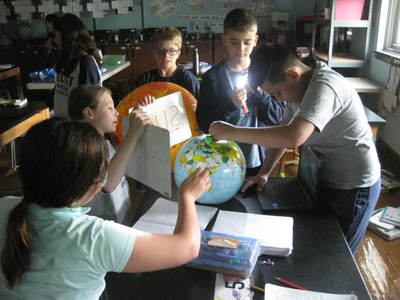
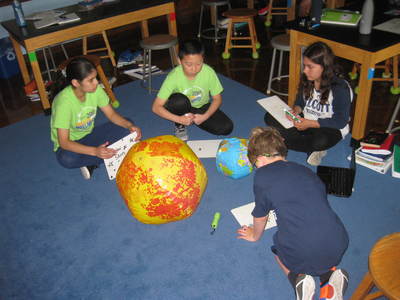
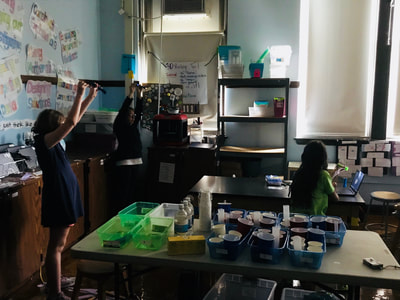
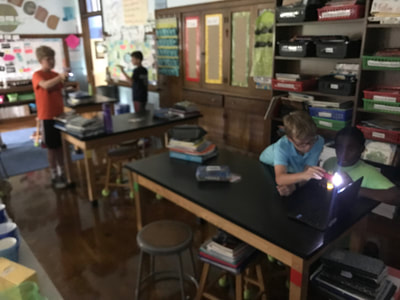
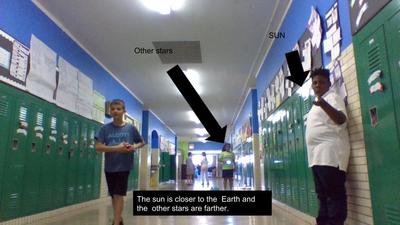
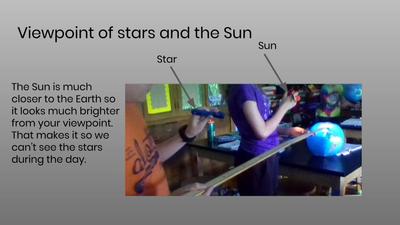
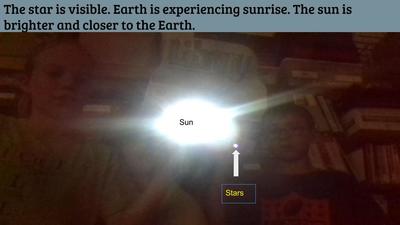
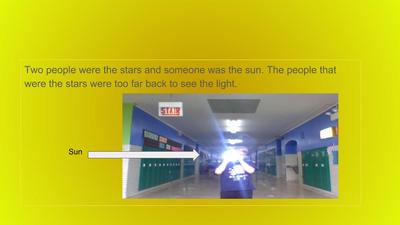
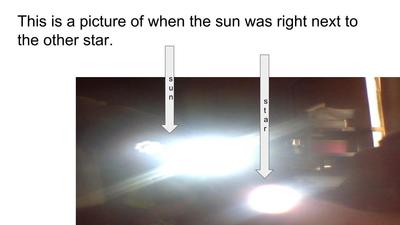
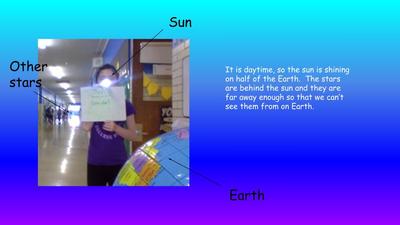
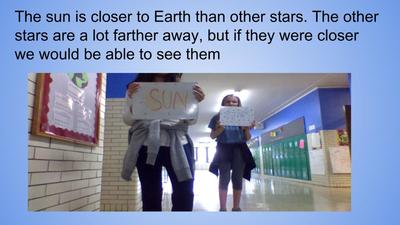
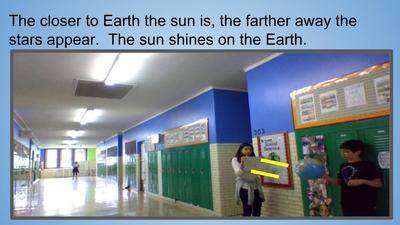
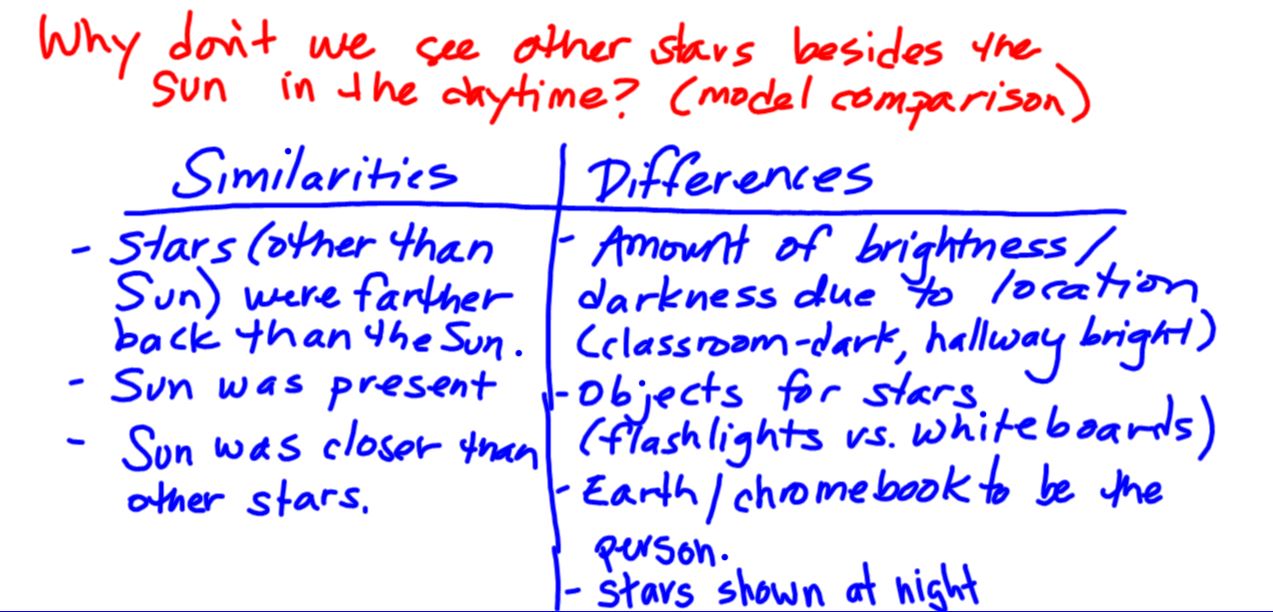
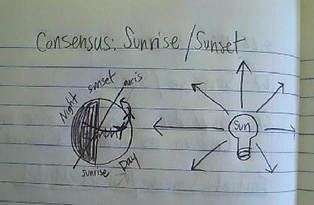
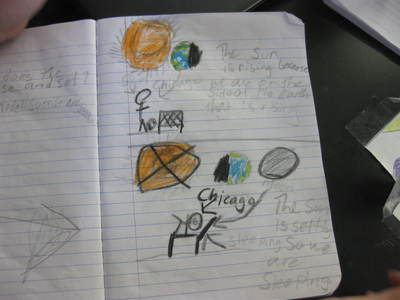
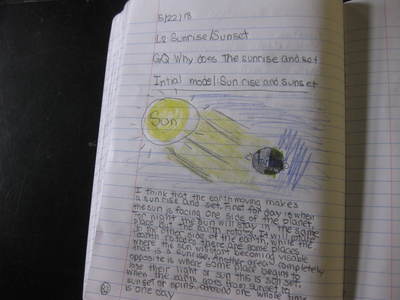
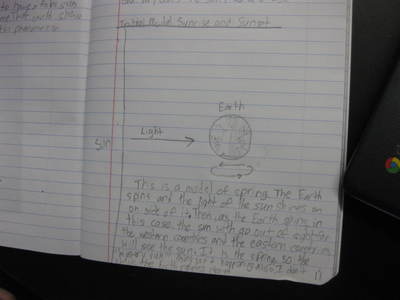
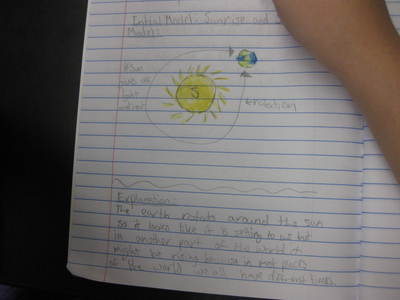
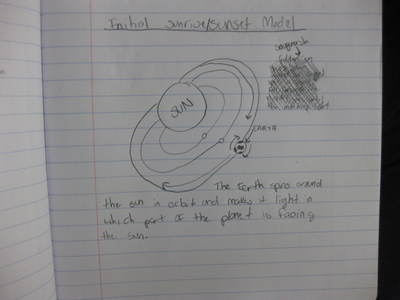
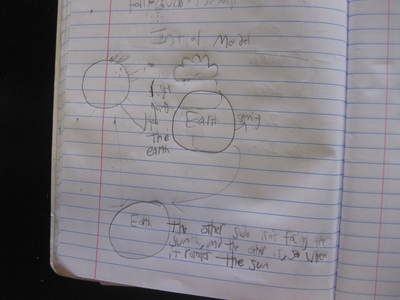
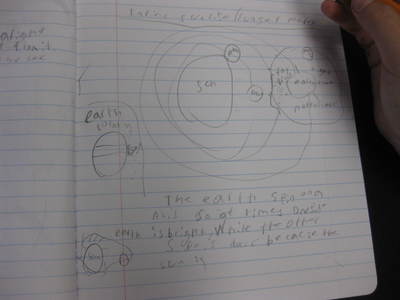
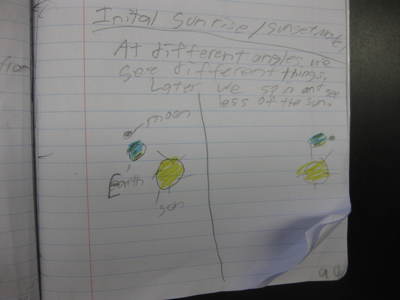
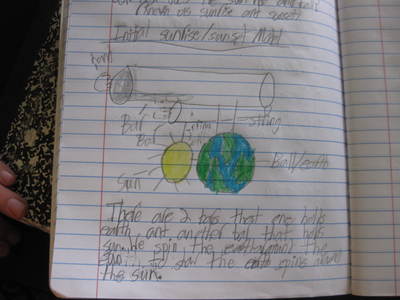
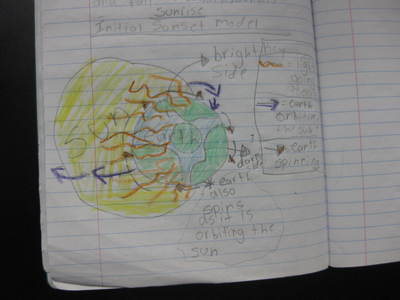
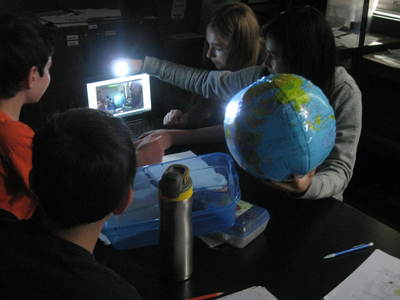
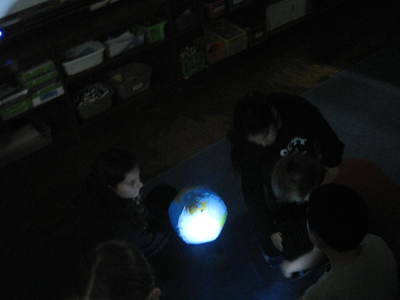
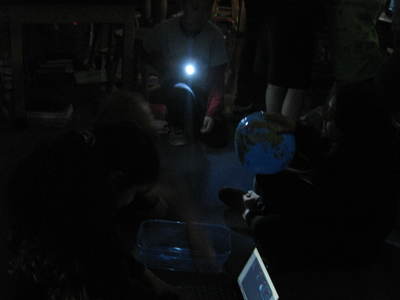
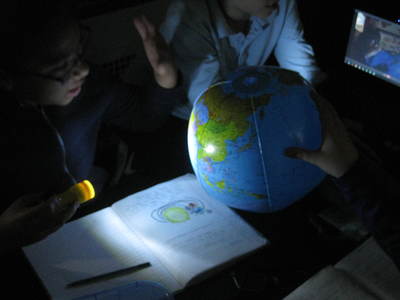
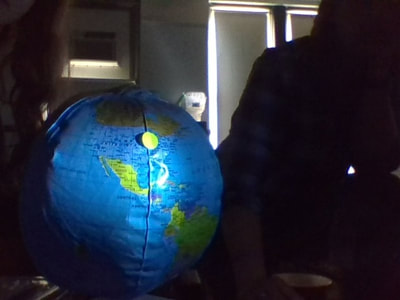
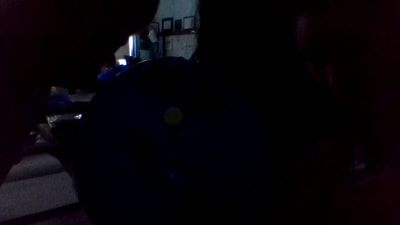
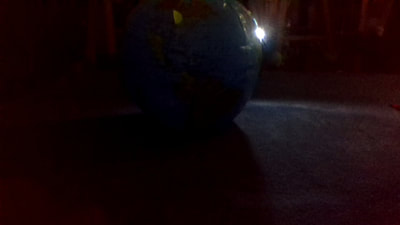
 RSS Feed
RSS Feed